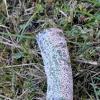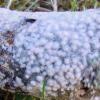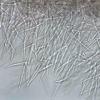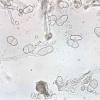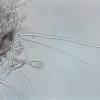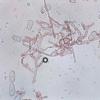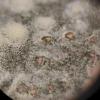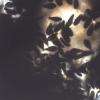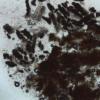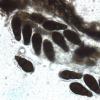
17-12-2025 18:35
 Michel Hairaud
Michel Hairaud
Bonjour à tous/Hi to everyone I am passing along

15-12-2025 15:48
 Danny Newman
Danny Newman
Melanospora cf. lagenaria on old, rotting, fallen

15-12-2025 15:54
 Johan Boonefaes
Johan Boonefaes
Unknown anamorph found on the ground in coastal sa

15-12-2025 21:11
 Hardware Tony
Hardware Tony
Small clavate hairs, negative croziers and IKI bb

15-12-2025 07:09
 Danny Newman
Danny Newman
indet. Rutstroemiaceae sp. on unk. fallen leavesMc

15-12-2025 07:05
 Danny Newman
Danny Newman
Pseudosclerococcum golindoi (det: Zotto)near Cosb

15-12-2025 11:49
 Danny Newman
Danny Newman
ITS sequences from the following two collections B

15-12-2025 12:34
 Danny Newman
Danny Newman
indet. Rhytismataceae on oak leafnear Purchase Roa
On 5 August 2022, a friend gave me a piece of a branch of Ulmus (13 cm long, 2.5 cm in diameter) covered with an anamorph. Under those white/pink spots, the bark was covered with green algae and lichens.
The conidia with 1 sept (slightly off-centre and slightly contracted there) have the following dimensions: 20.3 - 24.5 × 10.6 - 12.7 µm; Q = 1.8 - 2.2 ; Me = 22.5 × 11.6 µm .
When wiping off those downy spots I found white bumps in the bark, under which were black perithecia with 1 ostiole that contained very dark spores with following dimensions:
43 - 55.5 × 18.6 - 22.6 µm; Q = 2 - 2.7; Me = 50 × 20.9 µm.
Due to the age of the branch, the prevailing dryness and heat, the material to be examined was in poor condition. With the key of ME Barr Mycotaxon Vol XV 1982 I could identify the ascomata as: Splanchnonema foedans.
My question is twofold: 1) Can someone confirm my determination?
2) Is the anamorph related to S. foedans and can it be identified?
Many thanks in advance,
François Bartholomeeusen

This is Splanchnonema foedans indeed, most probably a new species for Flanders.
The anamorph is Arthobotrys-like.
All the best,
Bernard
Despite the poor condition of the substrate, this is still a good find. Your choice for Arthrobotrys is more than plausible. I'm leaving for a week in the coolness of the coast and will try to elaborate on this find upon my return.
Thanks again for your reaction,
François

